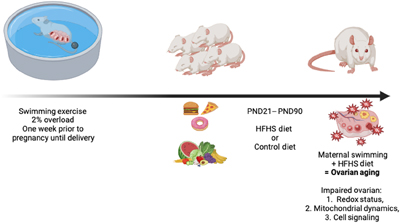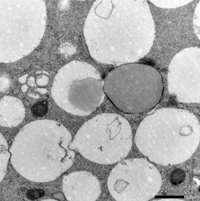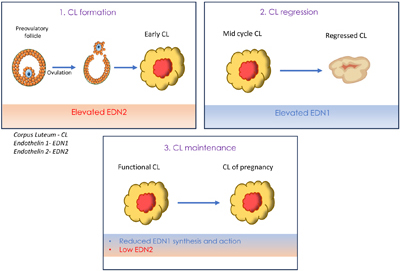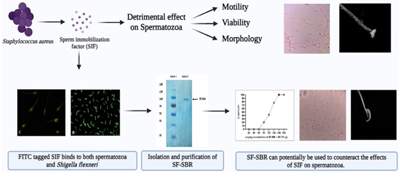This study explores how a mother’s physical activity and diet during pregnancy can shape the long-term health of her offspring, using a rat model. We found that swimming during pregnancy helped protect against weight gain in the offspring, but when combined with a high-fat, high-sugar diet after birth, it disrupted important antioxidant defenses in the offspring’s ovaries. These findings highlight the complex impact of maternal habits on the future health of the next generation. Image by Cristiane Matté using BioRender.
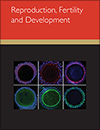
Reproduction, Fertility and Development
Volume 37 Number 2 2025
Poor egg (oocyte) quality is a leading cause of reduced fertility in humans and animals. Large vesicles within oocytes appear to be important for oocyte quality in animals but their composition is unknown. Our study has identified that these vesicles, which appear empty in electron micrographs, contain lipid that differs to that contained in classical lipid droplets. This knowledge may be used to improve in vitro maturation media to enhance oocyte quality. Image by K L Reader.
This article belongs to the collection: The biology of the ovary – Honouring the contributions of Ken P McNatty and Rex J Scaramuzzi.
RD24131 Abstract | RD24131 Full Text | RD24131PDF (5.3 MB) Open Access Article
Understanding the intricate dance of hormones in the ovaries is crucial for women’s health and fertility. This review highlights the roles of two short peptides, endothelin-1 and endothelin-2, which govern the life cycle of the corpus luteum – a key gland for maintaining pregnancy. Our findings reveal that while endothelin-2 promotes the formation of this gland, endothelin-1 triggers its demise, together shedding light on the control and regulation of the reproductive cycle and potential treatments for reproductive disorders. Diagram by Magdalena Szymanska, Raghavendra Basavaraja and Rina Meidan.
Bacteria and human spermatozoa share similar surface proteins. This unexpected connection could be key to understanding certain types of unexplained infertility. This study found that a bacterial protein, sperm immobilization factor (SIF), can damage spermatozoa by binding to it. This protein also binds to the bacteria Shigella flexneri. By isolating the SIF binding receptor from Shigella flexneri, this study opens new avenues for treating infertility, offering hope for many affected couples. Diagram by Thomson Soni and Vijay Prabha.



